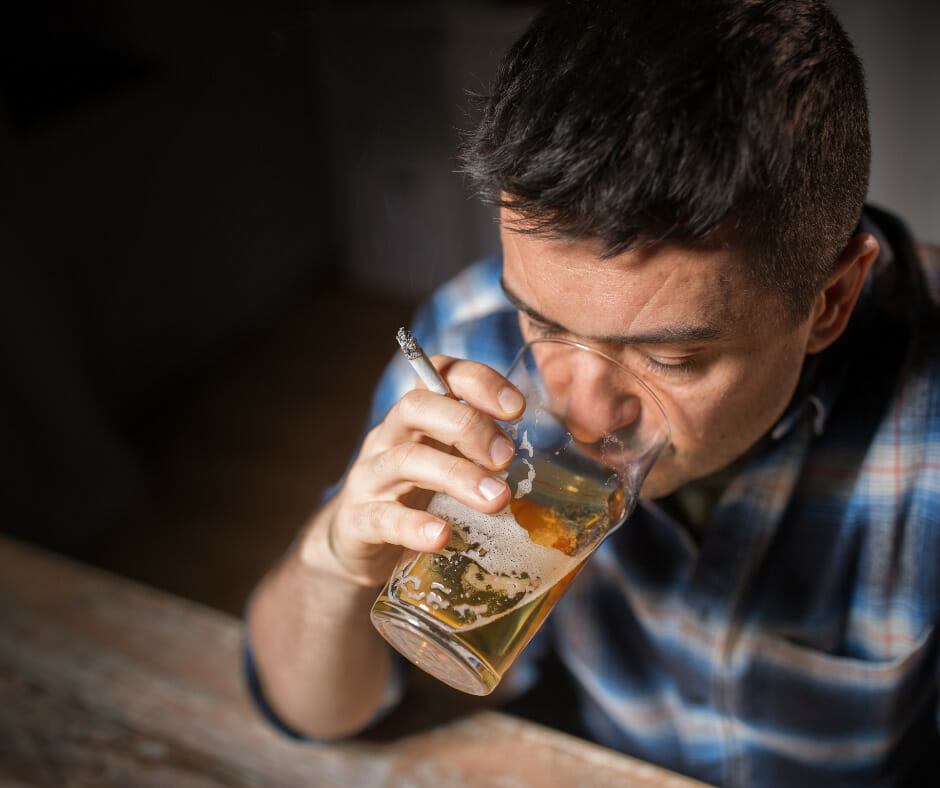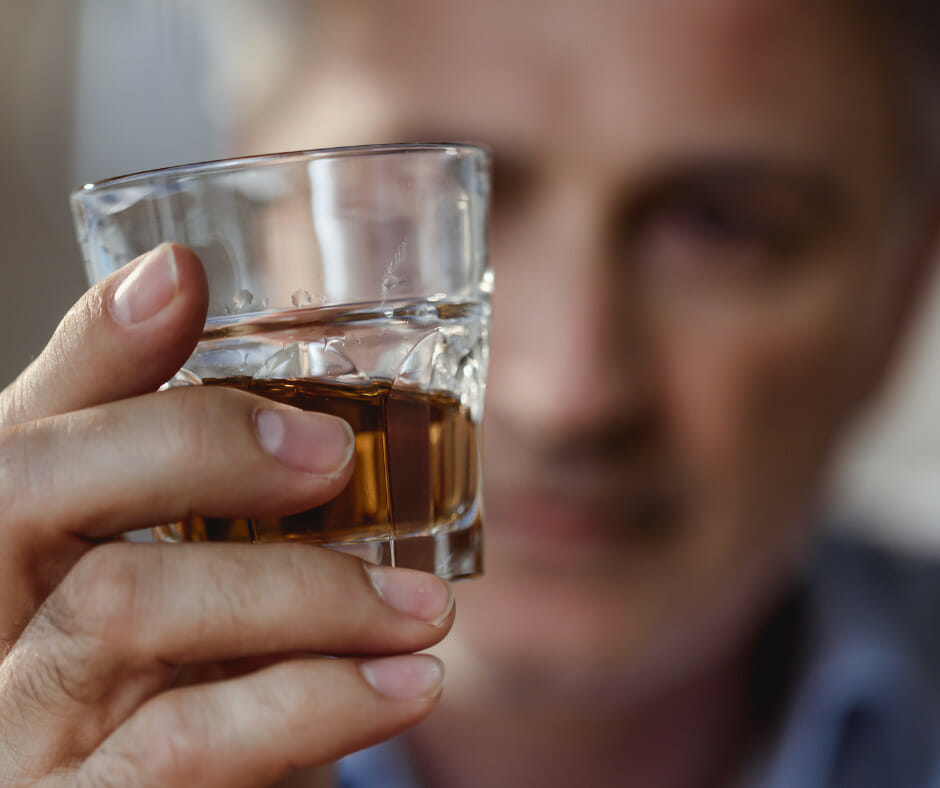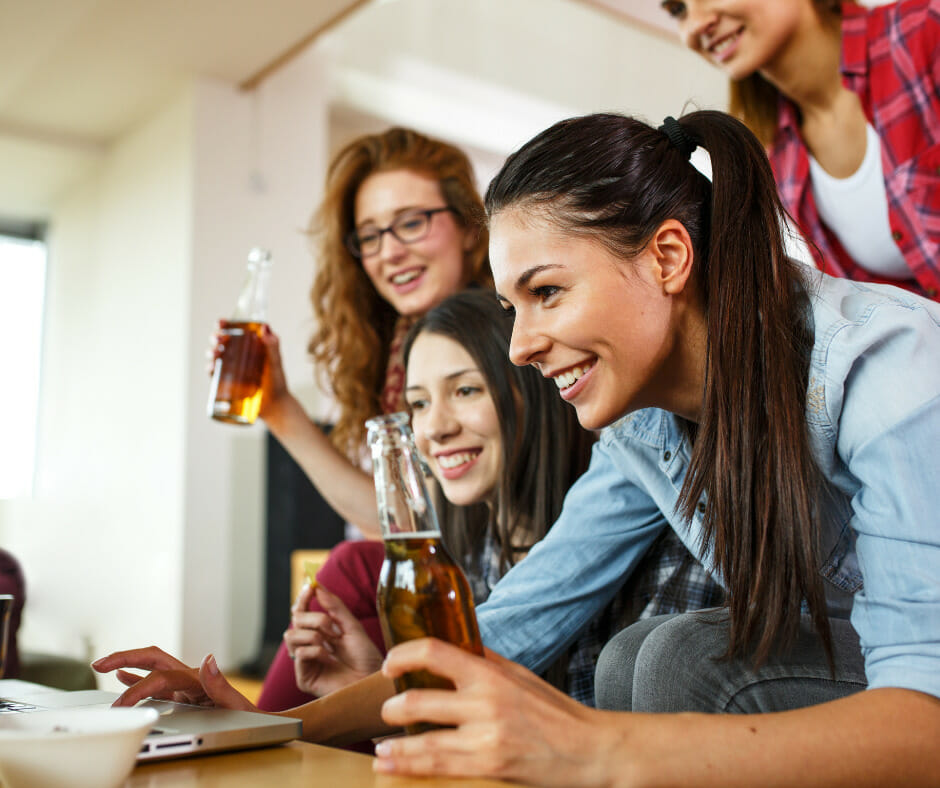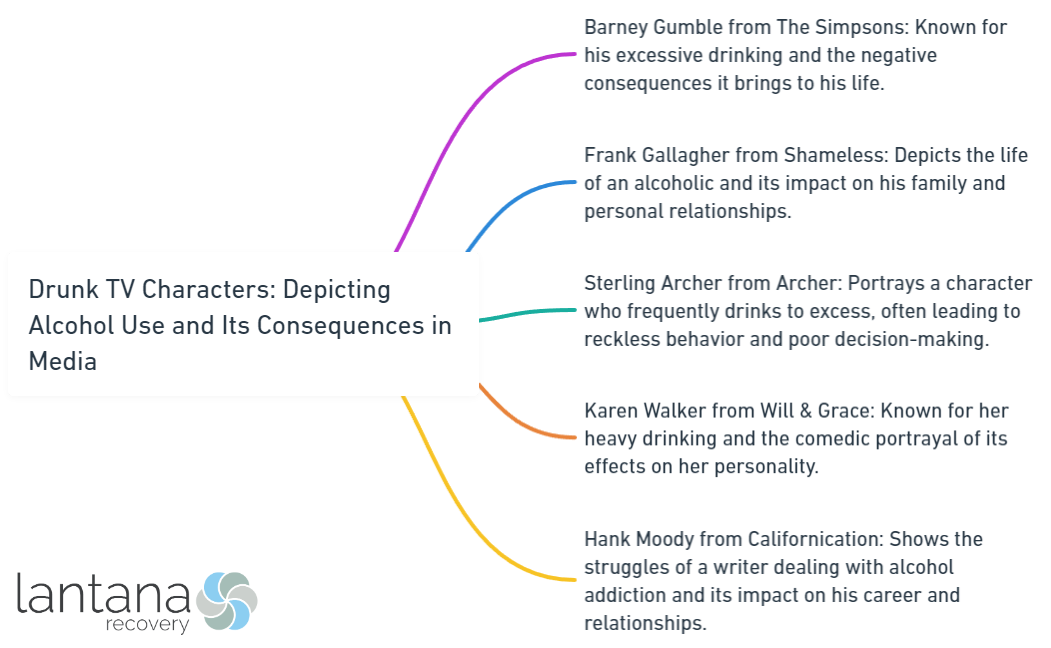The portrayal of drunk TV characters and the depiction of alcohol use in media have been a topic of discussion and analysis in recent years. This article aims to explore the reasons behind the prevalence of drunk TV characters in media, the stereotypes associated with them, and the consequences of such portrayals. It delves into the impact of drunk TV characters on society and addresses the issue of responsible portrayal of alcohol use in TV shows.
The representation of drunk TV characters is a common occurrence in various forms of media. Many TV shows feature characters who engage in excessive alcohol consumption, showcasing the consequences and challenges that come with it. This raises questions about why drunk TV characters are so prevalent in media. Is it a reflection of reality? Or is it a way to entertain and captivate audiences?
The portrayal of alcohol use in TV shows varies, ranging from humorous and lighthearted to dark and gritty. Alcohol consumption is often depicted as a social activity, a means of coping with stress or emotional turmoil, or even a source of comic relief. These portrayals often contribute to the perpetuation of stereotypes associated with drunk characters, such as the reckless partygoer, the struggling addict, or the comical drunkard.
While the depiction of drunk TV characters can be entertaining, it is important to consider the consequences of such portrayals. Studies have shown that the media can influence viewer behavior, including their attitudes towards alcohol and their drinking habits. The question arises as to whether the portrayal of drunk TV characters influences real-life alcohol consumption and contributes to alcohol-related issues.
Ethical concerns also come into play when discussing the depiction of alcohol use in TV shows. It raises questions about responsible storytelling and the potential impact on vulnerable audiences, such as teenagers or individuals struggling with alcohol addiction. Should there be guidelines or rating systems to ensure the responsible portrayal of alcohol use on TV?
The impact of drunk TV characters on society goes beyond individual behavior. The portrayal of alcohol use in media can shape public perception and attitudes towards alcohol. It can either normalize excessive drinking or raise awareness about the negative consequences associated with it. Furthermore, it is essential to examine whether the depiction of alcohol use in TV shows contributes to real-life alcohol-related problems.
Addressing this issue requires a balance between realism and responsible storytelling. TV shows can play a significant role in raising awareness and educating audiences about the risks and consequences of excessive alcohol consumption. By portraying realistic characters who face the challenges of alcohol use, TV shows can foster empathy and understanding while also encouraging responsible behavior
The Representation of Drunk TV Characters
The representation of drunk TV characters shapes public perception of alcohol use and its consequences. These portrayals influence viewers’ understanding of alcohol-related behaviors. Media must accurately depict the effects of alcohol consumption to educate and raise awareness about its dangers.
1. Accuracy: The representation of drunk TV characters should reflect the physical and behavioral effects of alcohol. Exaggerations or glamorizations that downplay the negative consequences of excessive drinking must be avoided.
2. Consequences: TV shows can depict impaired judgment, risky behavior, and negative interpersonal relationships resulting from alcohol use. By showcasing these consequences, viewers gain a better understanding of the harm caused by excessive drinking.
3. Diversity: Portraying a diverse range of characters with different outcomes from alcohol consumption ensures a realistic representation of its impact on individuals from different backgrounds.
4. Responsible messaging: TV shows should incorporate responsible drinking messaging when depicting alcohol use. This includes highlighting alternatives to drinking, characters making informed decisions, and promoting moderation.
5. Contextualization: Providing context for the characters’ alcohol use helps viewers understand their actions. This involves exploring factors like personal struggles, societal influences, or emotional coping mechanisms.
By considering these factors, TV shows contribute to a more informed understanding of alcohol use and its consequences. Responsible and accurate representation of drunk TV characters is crucial, as it can impact viewers’ attitudes and behaviors towards alcohol consumption.
Why are Drunk TV Characters Common in Media?
Drunk TV characters are common in media for multiple reasons. They add entertainment and humor to TV shows, which contributes to their popularity.
These characters also allow for the exploration of storylines, conflicts, and character development. Depicting the consequences of alcohol use can make the experiences relatable to viewers.
However, it is important to consider the potential negative impact of these portrayals. Excessive drinking may normalize unhealthy habits, especially among young audiences.
To address this issue, TV shows can incorporate messages of moderation, responsible alcohol use, and highlight the potential consequences of excessive drinking.
Implementing rating systems or guidelines can help ensure appropriate content for different audiences. By making conscious choices about the depiction of alcohol use, TV shows can promote a more responsible portrayal of drunk characters and encourage a healthier attitude towards alcohol.

The Portrayal of Alcohol Use
The portrayal of alcohol use in media has a significant influence on perceptions and attitudes towards drinking. Therefore, it is essential to examine how alcohol use is depicted.
The way alcohol use is portrayed on TV and in movies often presents it as glamorous and normalizes excessive drinking. This can lead to the misconception that excessive drinking is harmless and desirable, as characters engage in heavy alcohol consumption without facing any consequences.
Alcohol use is frequently associated with positive experiences such as socializing and celebrations. This association can influence individuals to perceive alcohol as necessary for enjoyable activities and social interactions.
However, the lack of representation of the negative effects and consequences of excessive drinking in media is concerning. Characters rarely experience health issues, strained relationships, or legal problems as a result of their alcohol use. This failure to provide a balanced and realistic representation undermines the potential harm of excessive drinking.
To address these concerns, it is crucial for the media to present a more accurate depiction of alcohol use. This includes showcasing responsible drinking, highlighting the negative consequences of excessive consumption, and promoting healthier alternatives to alcohol-centered activities.
Research indicates that exposure to alcohol portrayal in media increases the likelihood of underage drinking and alcohol-related problems among young people. Therefore, it is critical to consider the impact of media on alcohol use behaviors.
How is Alcohol Use Depicted in TV Shows?
Alcohol use is portrayed in TV shows in various ways. TV shows depict characters consuming alcohol in social settings, such as bars, parties, or restaurants, to create realism and reflect the social aspect of drinking. In addition, alcohol use is portrayed as a way for characters to cope with stress, deal with emotions, or enhance their confidence, highlighting the psychological effects of alcohol.
Some shows depict excessive alcohol consumption, with characters getting drunk or engaging in irresponsible behaviors. This serves comedic effect or warns about the consequences of excessive drinking. Moreover, TV show creators also utilize alcohol as a storytelling device to reveal character traits or develop plotlines. For example, a character’s struggles with alcoholism may add depth to their story.
The portrayal of alcohol use in TV shows can vary based on genre, target audience, and cultural context. Some shows glamorize excessive drinking, while others present a more balanced or negative view. Therefore, the portrayal of alcohol use in TV shows influences viewer behavior and public perception. It is important for creators to consider the potential impact and balance realism with responsible storytelling. Rating systems exist to provide appropriate content for different age groups and raise awareness about the risks of excessive drinking.
What Are the Different Stereotypes Associated with Drunk TV Characters?
What Are the Different Stereotypes Associated with Drunk TV Characters?
The stereotypes of drunk TV characters can vary depending on the show and character. Here are some common stereotypes:
-
The Comedic Character: This stereotype portrays drunk TV characters as comedic relief, engaging in slapstick humor, stumbling around, and making silly or inappropriate jokes. Their drunken behavior is played for laughs, seen as harmless and entertaining.
-
The Trainwreck: This stereotype presents drunk TV characters as troubled individuals struggling with alcohol addiction. They exhibit destructive behavior like blacking out, fighting, or neglecting responsibilities. This portrayal emphasizes the negative consequences of alcohol abuse.
-
The Life of the Party: This stereotype depicts drunk TV characters as the center of attention at social gatherings. They are charismatic, confident, and charming when under the influence, drawing others to their lively and fun-loving personality. This portrayal may romanticize excessive drinking for popularity and social success.
-
The Tragic Figure: This stereotype portrays drunk TV characters as tormented souls who use alcohol to cope with deep emotional pain or trauma. They struggle to control their drinking and engage in self-destructive behavior. This portrayal highlights the dark and tragic aspects of alcoholism.
-
The Reckless Rebel: This stereotype presents drunk TV characters as rebellious and fearless, using alcohol to escape societal norms and expectations. They engage in risky behavior like driving under the influence, dangerous stunts, or breaking the law. This portrayal emphasizes the thrill-seeking aspect of excessive drinking.
It’s important to note that these stereotypes are not comprehensive and can vary in complexity and representation. TV shows have a responsibility to portray such characters with sensitivity and awareness of their impact on viewers.

Consequences of Depicting Alcohol Use in Media
The consequences of portraying alcohol use in media can have a significant impact on individuals and society. Here are some important considerations:
– Normalizing alcohol consumption: Depicting alcohol use in media can normalize excessive drinking behavior. This can lead to the perception that it is a socially acceptable and common activity, increasing alcohol consumption among young and impressionable audiences.
– Portraying risk-taking behavior: Media often showcases characters engaging in risky and dangerous behaviors while under the influence of alcohol. This can influence viewers to imitate these actions, resulting in accidents, injuries, and even fatalities.
– Reinforcing stereotypes: Frequent portrayals of heavy drinking can reinforce stereotypes associated with alcohol use, such as the “fun drunk” or the “party animal.” This can perpetuate harmful narratives and downplay the negative consequences of excessive alcohol consumption.
– Implications for mental health: Media representations of alcohol use can sometimes romanticize or glamorize drinking as a coping mechanism for stress or emotional difficulties. This can contribute to the normalization of using alcohol as a means of self-medication, potentially exacerbating mental health issues.
Pro-tip: Media creators should strive for responsible and balanced portrayals of alcohol use. They should consider the potential consequences on individuals and society. By depicting the realistic risks and negative consequences of excessive drinking, media can promote a healthier relationship with alcohol and raise awareness about its potential harm.
Does the Portrayal of Drunk TV Characters Influence Viewer Behavior?
Studies have shown that the portrayal of drunk TV characters has a significant influence on viewer behavior. Media has the power to shape attitudes, beliefs, and behaviors, and this certainly applies to the depiction of alcohol use on television.
When viewers are exposed to the glamorous or carefree portrayals of drunk characters without any negative consequences, it normalizes and even glamorizes excessive drinking. This can lead people to believe that such behavior is acceptable or even desirable. This influence is particularly strong among young and impressionable viewers who may face peer pressure.
Research has demonstrated that exposure to alcohol use on TV leads to an increase in real-life alcohol consumption. A study conducted by the Journal of Studies on Alcohol and Drugs discovered that adolescents who are exposed to alcohol use in movies are more likely to start drinking and engage in binge drinking.
Furthermore, the portrayal of drunk TV characters perpetuates stereotypes about alcohol use. It presents alcohol as a means of coping with stress, having fun, or escaping from problems while ignoring the negative consequences it can have on health, relationships, and overall well-being.
It is crucial to acknowledge the tremendous influence of media in shaping viewer behavior and to advocate for responsible portrayals of alcohol use on TV. By showcasing the negative effects of excessive drinking and promoting responsible drinking practices, TV shows can play a significant role in addressing the issue of alcohol abuse and encouraging healthier behaviors.
Fact: The National Institute on Alcohol Abuse and Alcoholism reports that excessive alcohol consumption causes approximately 95,000 deaths in the United States each year.
Are There Any Ethical Concerns with Depicting Alcohol Use in TV Shows?
Ethical concerns arise from depicting alcohol use in TV shows, especially for young and impressionable viewers.
Are there any ethical concerns with depicting alcohol use in TV shows? One concern is the glamorization of alcohol use, which can normalize excessive and irresponsible drinking. This can lead to real-life consequences like alcohol abuse and related health issues.
Stereotypes and misconceptions can also be reinforced, as TV shows often portray drunk characters as comedic or entertaining. This trivializes the serious nature of alcohol abuse and its effects on individuals and society.
Additionally, the lack of accurate portrayal of negative consequences can normalize harmful behaviors. By omitting the risks of addiction, impaired judgment, and accidents, TV shows fail to educate viewers about the true dangers of excessive drinking.
To address these concerns, TV shows should strive for a balanced depiction of alcohol use, highlighting potential negative consequences and promoting responsible drinking messages. Producers and writers must consider the impact their portrayals may have on viewers’ perceptions and behavior.
While specific rating systems or guidelines for alcohol use on TV are lacking, incorporating responsible storytelling and accurate information can help mitigate ethical concerns. Prioritizing viewer well-being and education over entertainment value is crucial.

The Impact of Drunk TV Characters on Society
The impact of drunk TV characters on society is significant. These characters can shape viewers’ attitudes and behaviors towards alcohol, leading to both positive and negative consequences.
1. Attitudes towards alcohol: The influence of drunk TV characters on viewers’ perception of alcohol can be significant. These characters often portray alcohol as glamorous or fun, which can normalize excessive drinking and create a culture where alcohol abuse is seen as acceptable. Research shows that media portrayals of alcohol use can greatly influence young people’s beliefs about drinking.
2. Behavior modeling: Drunk TV characters have the power to influence viewers to imitate their behavior, especially among those who identify with the characters. This can lead to increased alcohol consumption and risky drinking. The more viewers are exposed to these portrayals, the more likely they are to engage in such behavior.
3. Consequences of excessive drinking: Drunk TV characters often depict the negative consequences of alcohol abuse, such as impaired judgment, accidents, and strained relationships. These portrayals can serve as a cautionary tale and raise awareness about the dangers of excessive drinking. However, some viewers may not interpret these consequences as negative or overlook the potential harm associated with alcohol use.
4. Media responsibility: TV shows and producers bear the responsibility of accurately portraying the consequences of alcohol use and considering the impact on society. By depicting realistic and responsible drinking behaviors, TV shows can help promote a healthier relationship with alcohol and raise awareness of potential risks.
In history, media has consistently influenced society, shaping public opinion and societal norms. The portrayal of drunk TV characters is just one example. It is crucial for media creators and viewers to be aware of the impact these portrayals can have and promote responsible and accurate representations of alcohol use in the media.
How Does the Portrayal of Alcohol Use in Media Affect Public Perception?
The portrayal of alcohol use in media significantly affects public perception. Media’s role in shaping attitudes and beliefs means that how alcohol use is depicted can influence its perception in society.
1. Exaggerated alcohol consumption: When media glamorizes excessive drinking, it normalizes it. This can lead to the belief that heavy drinking is acceptable or desirable.
2. Influence on social norms: Media shapes social norms and behaviors. Positive depictions of alcohol use and its association with fun and socializing can create the belief that drinking is necessary for social interactions. This can influence individuals to conform to these expectations.
3. Perception of consequences: How media portrays the consequences of alcohol use influences public perception. Downplaying or making light of the negative effects of excessive drinking can lead to a diminished understanding of the real risks and harms.
4. Impact on underage drinking: Media plays a crucial role in shaping the perceptions and behaviors of young people. When alcohol use is portrayed as exciting or rebellious, it can influence underage individuals to engage in risky behaviors and consume alcohol before legal age.
To address the issue, media outlets should take responsibility and depict alcohol use realistically and responsibly. This means avoiding excessive or glamorized portrayals, accurately showing the potential consequences, and promoting moderation and responsible consumption. Implementing rating systems or guidelines for portraying alcohol use on TV can also ensure responsible storytelling. By doing so, media can help shape a more informed and responsible view of alcohol use in public perception.
Do Drunk TV Characters Contribute to Alcohol-related Issues in Real Life?
Do drunk TV characters contribute to alcohol-related issues in real life? The influence of media, including TV shows, on people’s behavior towards alcohol is a growing concern. While it is difficult to establish a direct causal relationship, several factors to consider are:
1. Social Norms: Drunk TV characters can normalize excessive alcohol consumption and create the perception that heavy drinking is acceptable or desirable.
2. Imitation: Individuals might imitate the behaviors and attitudes of drunk TV characters, including their drinking habits. This can lead to increased alcohol consumption and risky behaviors associated with intoxication.
3. Perceived Benefits: Some TV shows depict drunk characters as fun, carefree, or adventurous. This can create the perception that alcohol enhances social interactions and enjoyment, leading people to seek similar experiences in real life.
4. Alcohol Advertising: TV shows often include alcohol brands in their storylines or through product placement, reinforcing positive associations with drinking.
5. Vulnerable Populations: Young viewers, especially, are susceptible to the influence of media. They may model their behavior after characters they admire, perpetuating alcohol-related issues.
It is important to recognize that media alone cannot be solely blamed for alcohol-related issues. However, the portrayal of drunk TV characters can contribute to the normalization and glamorization of excessive alcohol consumption, potentially influencing individuals, especially those who are impressionable or vulnerable. More research is needed to fully understand the impact of media on alcohol behaviors and to develop responsible guidelines for the portrayal of alcohol use in TV shows.

Addressing the Issue: Responsible Portrayal of Alcohol Use in TV Shows
Addressing the issue of responsible portrayal of alcohol use in TV shows is of utmost importance for promoting a balanced perspective on alcohol consumption. Here are some key points to consider:
– Ensuring accuracy: It is crucial for TV shows to depict the true effects of alcohol use on individuals and society, including impaired judgment, potential health risks, and strained relationships.
– Avoiding glamorization: TV shows should refrain from romanticizing excessive alcohol consumption and instead focus on illustrating the negative consequences such as poor decision-making and detrimental effects on health.
– Promoting moderation: TV shows have the power to encourage responsible drinking habits by showcasing characters who consume alcohol in moderation and highlighting social situations that foster responsible drinking.
– Embracing diverse perspectives: TV shows should accurately represent the wide range of attitudes towards alcohol by featuring characters with different viewpoints and portraying both positive and negative outcomes associated with alcohol use.
– Seizing educational opportunities: TV shows can serve as educational platforms by including public service announcements or storylines that address the risks and consequences of excessive drinking.
By addressing the responsible portrayal of alcohol use in TV shows, we can contribute to a more informed understanding of alcohol consumption in society.
How Can TV Shows Balance Realism and Responsible Storytelling?
TV shows have a responsibility to balance realism and responsible storytelling when it comes to depicting alcohol use. By incorporating the following strategies, this balance can be achieved:
1. Portray consequences: It is important for TV shows to illustrate the negative effects of excessive alcohol consumption, thus highlighting the potential dangers.
2. Show responsible drinking: TV shows can promote responsible drinking by depicting characters who use alcohol in moderation and make thoughtful choices.
3. Avoid glamorization: Excessive drinking should not be romanticized in TV shows. Instead, the focus should be on illustrating the negative repercussions and highlighting healthier alternatives.
4. Provide accurate information: TV shows can also play a role in providing accurate and factual information about alcohol use and its risks. This helps viewers make informed decisions.
5. Collaborate with experts: To ensure responsible storytelling, TV shows can seek the guidance of experts in alcohol misuse and addiction.
By incorporating these strategies, TV shows can strike a balance between realism and responsible storytelling when it comes to depicting alcohol use.
Are There any Rating Systems or Guidelines for Portraying Alcohol Use on TV?
There are rating systems and guidelines for portraying alcohol use on TV. Are There any Rating Systems or Guidelines for Portraying Alcohol Use on TV? These ensure responsible and appropriate depictions of alcohol consumption in media.
One example is the TV Parental Guidelines, also known as the TV ratings. They provide information about a show’s content, including instances of alcohol use. The ratings categories include TV-MA (Mature Audience), TV-14 (Parents Strongly Cautioned), and TV-PG (Parental Guidance Suggested). These ratings help viewers decide if a show is suitable for themselves or their children.
TV producers and creators also follow industry guidelines. Are There any Rating Systems or Guidelines for Portraying Alcohol Use on TV? These guidelines promote responsible storytelling and prevent excessive or glamorized portrayals of alcohol use. They may include recommendations on the frequency and intensity of alcohol use on screen, as well as the consequences and risks.
The rating systems and guidelines aim to balance realism and responsible storytelling. They prevent the normalization of harmful alcohol use and raise awareness of the potential consequences. By following these guidelines, TV shows can portray alcohol use responsibly and help viewers make informed choices about what they watch.
Frequently Asked Questions
1. How does the portrayal of alcohol in TV programming influence alcohol consumption?
The portrayal of alcohol in TV programming has been found to increase alcohol consumption in viewers. Exposure to alcohol portrayals on TV and in commercials significantly influences viewers’ drinking behaviors, increasing social acceptance of alcohol use and cueing cravings for specific brands.
2. What are the top genres for alcohol depiction on TV?
The top 5 genres for alcohol depiction on TV are sports, comedy, animated, reality, and drama. These genres frequently include alcohol in their storylines and advertisements.
3. Do alcohol commercials on TV affect the amount of alcohol consumed?
Yes, alcohol commercials on TV can influence the amount of alcohol consumed. A study conducted in a bar lab setting with young adult male participants showed that those exposed to substantial alcohol portrayal in either movies or commercials consumed more alcohol than those who were not exposed.
4. How do TV shows and movies contribute to alcohol consumption?
TV shows and movies contribute to alcohol consumption through the portrayal of drinking models and the normalization of excessive alcohol use. Characters using specific alcohol brands can influence viewers’ choices and behaviors, leading to increased alcohol consumption.
5. What role does advertising play in influencing underage drinking?
Advertising, including alcohol commercials, plays a significant role in influencing underage drinking. Adolescents who are consistently exposed to alcohol advertisements on TV are more likely to start drinking early or drink more if they are already drinking. Kids who watch lead characters engage in substance abuse on TV are also more likely to start drinking, as they try to emulate their role models.
6. Should parents be concerned about their children’s exposure to alcohol in TV programming?
Yes, parents should be aware of the advertising and monitor their children’s TV use. Kids of all ages are being exposed to alcohol-related promotions during sports broadcasts, which have different regulations than regular TV programming. Discussing the negative consequences of alcohol use and utilizing parental controls if necessary can help reduce the influence of alcohol portrayals on children.










